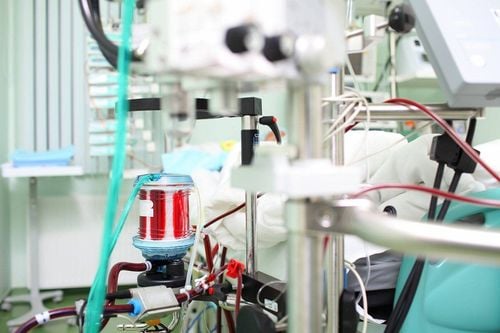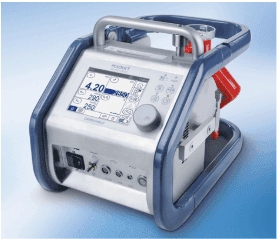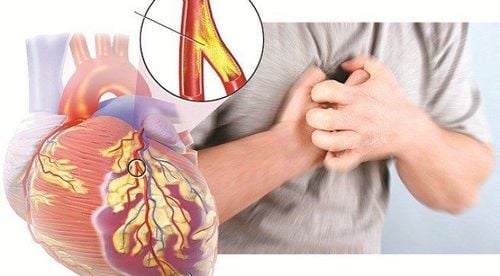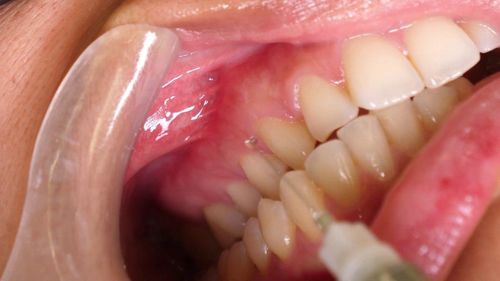This is an automatically translated article.
The article was written by Specialist Doctor II Nguyen Trung Thanh - Anesthesiologist and Anesthesiologist, Department of Surgical Anesthesia - Vinmec Central Park International General Hospital.Aspiration pneumonia during anesthesia is an aspiration pneumonia that occurs during anesthesia and recovery. Although early diagnosis and appropriate and timely therapeutic interventions can reduce serious complications and mortality, prevention to limit the risk of aspiration is critically important.
1. Treatment of aspiration pneumonia in anesthesia
Detect early and quickly clean up as soon as gastric juice appears in the throat or overflows into the trachea, place the head low and turn the head to one side if possible to limit the fluid in the throat from continuing to move passively. into the airway.Aspiration can be performed before or after intubation depending on whether the reflux is still ongoing or if the trachea is clearly visible?
Bronchoscopy for fluid aspiration is also recommended, if equipped, and should be prepared for suspected cases of high risk of reflux through pre-anesthesia assessment of the patient.
The decision to continue or delay surgery depends on the urgency of the operation. Blood oxygen saturation, pulmonary compliance, and patient response to bronchodilators and positive end-expiratory pressure ventilation. Mechanical ventilation protects the lungs. Insert a nasogastric tube for suction or gravity drainage to decompress to avoid re-aspiration.
Antibiotics and corticosteroids are not recommended for routine use but individualized depending on the patient's condition. In case of deciding to use antibiotics, it is necessary to take microbiological cultures through aspiration to have the basis to de-escalate antibiotics or discontinue antibiotics if there is no evidence of infection.

Circulatory and respiratory arrest may occur in severe cases. The patient needs immediate cardiopulmonary resuscitation at the same time as the airway is cleared. If possible, transmembrane oxygenation intervention (ECMO) stabilizes the patient and assesses pulmonary resuscitation.
Currently, ECMO technology has been deployed at Vinmec Central Park hospital. ECMO technique is considered a lifesaving technique for severe pneumonia and acute myocarditis that do not respond to conventional treatments and need more time to recover. ECMO is also a bridge for seriously ill patients waiting for a heart or lung transplant.
In addition, the hospital has invested in modern machinery and equipment to support doctors during surgery and patient resuscitation, such as: Maquet's HR20 artificial cardiopulmonary system, Machine breathe GE's R860.
Please dial HOTLINE for more information or register for an appointment HERE. Download MyVinmec app to make appointments faster and to manage your bookings easily.
2. Prophylaxis of aspiration pneumonia during anesthesia
Because of the high rate of complications and death caused by aspiration pneumonia, prevention is extremely important. For patients with risk factors for aspiration, the primary aim of prophylaxis is to reduce the frequency and amount of inhalation and to minimize the colonization of pathogens.

2.1 Pre-anesthesia assessment Assess the patient's condition along with medical history, signs that increase the risk of reflux leading to aspiration pneumonia such as: gastroesophageal reflux disease, swallowing disorder or dysphagia , a history of diabetes , bloating or signs of delayed gastric emptying , cancer causing blockage of the esophagus .
2.2 Preoperative Fasting Follow the ASA guidelines for fasting and drinking within certain timeframes.
2.3 Prophylactic nasogastric tube placement There is currently a lack of supportive data even in emergency surgery (except in cases of suspected intestinal obstruction/paralysis). Therefore, the use of a nasal cannula must be decided by the surgeon and anesthesiologist based on the patient's condition and the extent of the need for catheterization. The risks and benefits should be carefully considered, as nasogastric tube placement may actually contribute to vomiting and subsequent aspiration in some patients.
In addition, nasogastric tube placement in patients undergoing esophageal surgery carries a high risk of injury, particularly in patients with obstruction due to hernia or obstruction of esophageal cancer.
In these cases, the surgeon should be present in the room during anesthesia to discuss and decide. If the patient has had a nasogastric tube inserted, gastric suction should be performed.
2.4 Taking Antihistamines and Proton Pump Inhibitors is thought to increase pH and decrease residual gastric volume. However, increasing the pH of gastric juice does not completely eliminate the risk of aspiration pneumonia.

Other drugs such as domperidol, metoclopramide, erythromycin, and renzapride can increase gastric emptying but are not recommended by the ASA.
Rapid Sequence Induction (RSI)
Reserve oxygen Inject anesthetics and muscle relaxants rapidly instead of detecting effective doses Cricoid pressure - Sellick (not recommended for all patients) Avoid ventilation Intubate Oral administration with a directoscope or a videoscope Although it is theoretically effective, the impact of RSI on aspiration prevention is not clear. Aspiration is a rare event, and the study needed a very large number of patients to determine whether there was a difference in inhalation rates between with and without RSI.
In addition, definitions of RSI vary widely and are not applied equally, making comparisons between studies difficult and challenging. The authors also examined evidence for the use of the cricoid press; There are no data to support the routine use of cricoid compression and many studies show that at least 50% of the esophagus is displaced relative to the cricoid.
Meanwhile, pressing the cricoid can deform the cricoid and obstruct the airway. It was concluded that cricoid compression is a benign practice and should be used in RSI, but depressurization should be reduced or the procedure should be discontinued if it is difficult to ventilate and secure the airway.
2.5 Patient's position during induction of anesthesia Put the head down 15-20o in combination with cricoid pressure. Side position: limit inhalation but make breathing difficult
Please dial HOTLINE for more information or register for an appointment HERE. Download MyVinmec app to make appointments faster and to manage your bookings easily.














